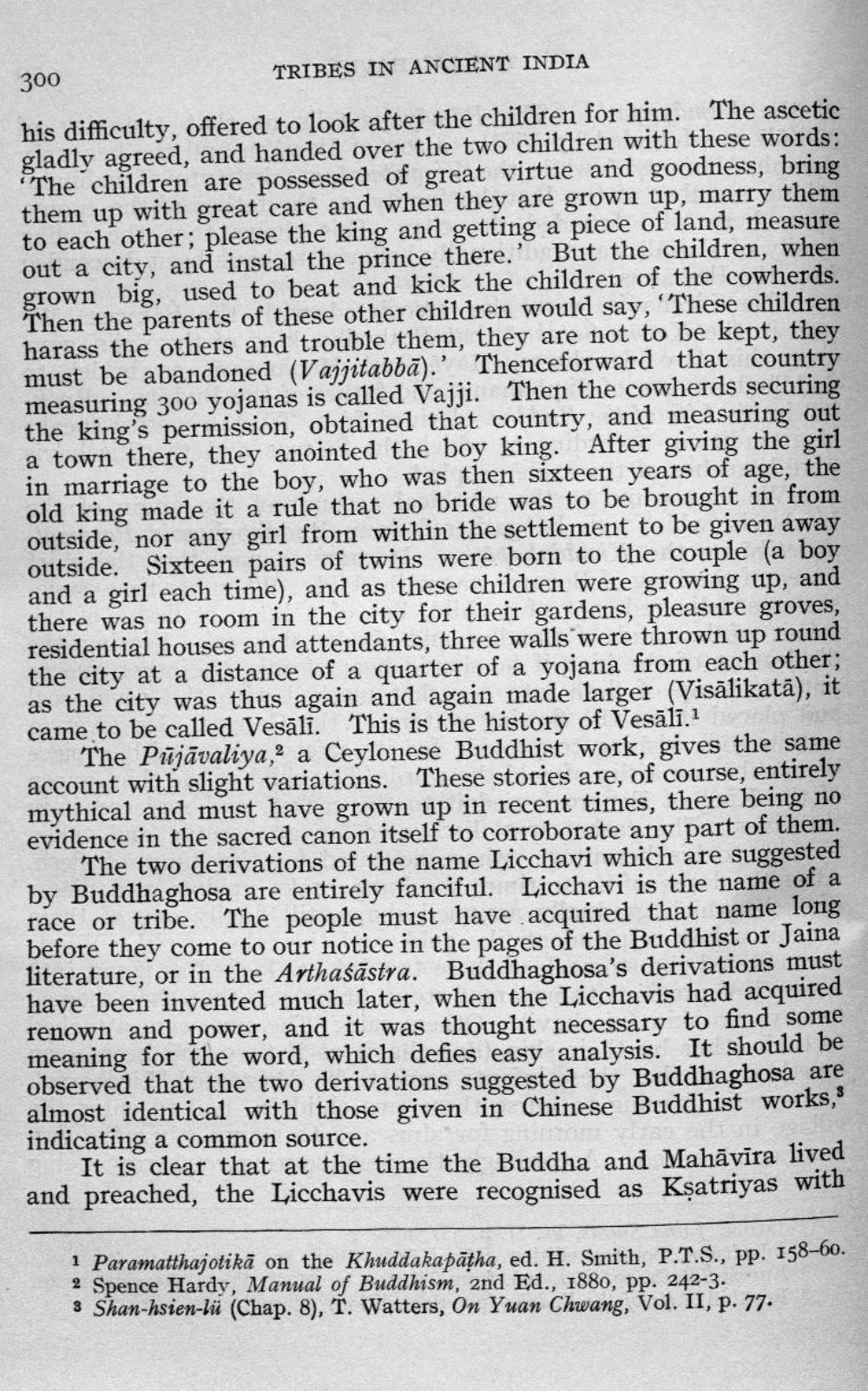________________
300
TRIBES IN ANCIENT INDIA his difficulty, offered to look after the children for him. The ascetic gladly agreed, and handed over the two children with these words: "The children are possessed of great virtue and goodness, bring them up with great care and when they are grown up, marry them to each other; please the king and getting a piece of land, measure out a city, and instal the prince there. But the children, when grown big, used to beat and kick the children of the cowherds. Then the parents of these other children would say, 'These children harass the others and trouble them, they are not to be kept, they must be abandoned (Vajjitabbā).' Thenceforward that country measuring 300 yojanas is called Vajji. Then the cowherds securing the king's permission, obtained that country, and measuring out a town there, they anointed the boy king. After giving the girl in marriage to the boy, who was then sixteen years of age, the old king made it a rule that no bride was to be brought in from outside, nor any girl from within the settlement to be given away outside. Sixteen pairs of twins were born to the couple (a boy and a girl each time), and as these children were growing up, and there was no room in the city for their gardens, pleasure groves, residential houses and attendants, three walls were thrown up round the city at a distance of a quarter of a yojana from each other; as the city was thus again and again made larger (Visālikatā), it came to be called Vesāli. This is the history of Vesālī.1
The Pūjāvaliya,2 a Ceylonese Buddhist work, gives the same account with slight variations. These stories are, of course, entirely mythical and must have grown up in recent times, there being no evidence in the sacred canon itself to corroborate any part of them.
The two derivations of the name Licchavi which are suggested by Buddhaghosa are entirely fanciful. Licchavi is the name of a race or tribe.The people must have acquired that name long before they come to our notice in the pages of the Buddhist or Jaina literature, or in the Arthaśāstra. Buddhaghosa's derivations must have been invented much later, when the Licchavis had acquired renown and power, and it was thought necessary to find some meaning for the word, which defies easy analysis. It should be observed that the two derivations suggested by Buddhaghosa are almost identical with those given in Chinese Buddhist works, indicating a common source.
It is clear that at the time the Buddha and Mahāvīra lived and preached, the Licchavis were recognised as Ksatriyas with
1 Paramatthajotikā on the Khuddakapātha, ed. H. Smith, P.T.S., pp. 158-60. 2 Spence Hardy, Manual of Buddhism, 2nd Ed., 1880, pp. 242-3. 3 Shan-hsien-lü (Chap. 8), T. Watters, On Yuan Chwang, Vol. II, p. 77.




